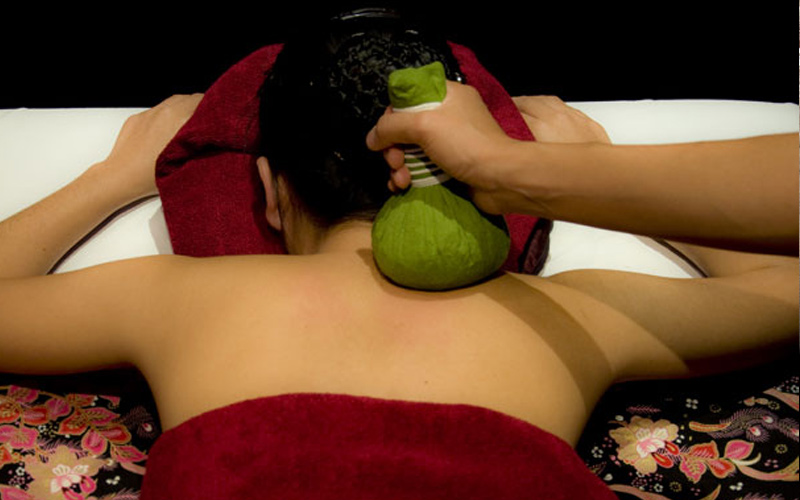Harnessing the Power of Thai Botanicals for Wellness and Beauty

Harnessing the Power of Thai Botanicals for Wellness and Beauty
Explore the natural bounty of Thailand, where age-old wisdom intertwines with modern sensibilities to nurture body, mind, and spirit. Those given element embodies centuries of tradition and the enduring quest for holistic well-being.
Sawasdee Healing Secrets of Luffah, Butterfly Pea Flower, Coconut, Rice, and More
LOOFAH (Luffa cylindrica)
Thais use the sweet-tasting young fruit of this gourd in a number of traditional dishes, and eat the flowers blanched, with chilli sauce. The dried mature fruit consists of thick fibres and is used as an exfoliating sponge in the bath.
BUTTERFLY PEA FLOWER (Clitorea ternatea)
For centuries Thai women have used the juices of anchan, a dark purple flower, to promote dark, lustrous, thick hair. It was also rubbed into babies’ eyebrows to make the brows grow thick and long. The flower is rich in Bioflavinoid, an ingredient in modern-day hair products that stimulate hair growth.
COCONUT (Cocos nucifera)
The coconut has myriad uses in Thailand. When the fruit is ripe, the hard, white flesh is grated, soaked in water and squeezed to produce coconut milk, an important ingredient in Thai curries and desserts. The ripe fruit contains a juice that makes a refreshing drink in hot weather. Oil of copra, extracted from the dried meat, is used as an ingredient in the cosmetics industry. Coconut oil was used in the olden days to treat stiff joints; the oil was heated with prai and the mixture rubbed in. Sawasdee Spa in Gurugram offers rejuvenating coconut-based treatments inspired by the rich traditions of Thailand, providing a serene oasis for relaxation and wellness seekers
RICE (Oryza sativa)
Rice is the lifeblood of Thai life. As the key crop and main food staple, it is highly revered in traditional culture and is protected by a goddess called Jao Mae Po Sob. The monarch officiates at the annual Royal Ploughing Ceremony, which marks the first day of the planting season. In the past Thais used rice to ward off ghosts – chanting monks endowed sacred properties onto rice that was then thrown on unwelcome spirits to chase them away. Many modern-day spas have adopted raw rice as an effective ingredient in natural body scrubs therapy.
SWEET BASIL (Ocimum basilicum)
This fragrant, spicy herb – called horapha in Thai – is eaten raw or used as a flavouring in many local dishes. It has medicinal properties and is used in traditional healing to help reduce mucous in colds and flu, eliminate gas and aid digestion. As an aroma therapy ingredient, the essential oil of the basil plant is used to refresh the senses and relieve tiredness.
MENTHOL
Known as phimsen in Thai, this is a mineral with a sharp, minty smell similar to that of camphor. Its refreshing smell helps ease respiratory problems, coughs and blocked sinuses. Phimsen is an important ingredient in Thai traditional herbal steams.
GALANGAL (Languas galanga)
This rhizome is often mistaken for ginger, but its whitish color with a pinkish tinge identifies it as galangal, a popular ingredient in Thai soups and curries for its fragrant, tangy aroma. Though too pungent to be eaten raw, the fresh root is used in traditional medicine to relieve digestive ailments and cure skin diseases. Galangal finds its way into modern spa treatments as an ingredient in herbal body wraps, such as those offered at Thai Herbals Spa, located in Worldmark Gurugram.
PRAI (Zingiber sp)
Prai is a rhizome of the ginger family and has been used for centuries as a herbal ingredient in hot compresses that are applied to relieve muscular aches and pains. It is also a natural emollient and has been used by generations of Thai women to tone and soften the skin. Prai oil is also popular as a scalp conditioner and is used in aromatherapy.
GINGER (Zingiber sp)
Thais use both the young and mature ginger rhizome in many foods and beverages. Ginger is known as a stimulant that has a heating effect on the body. Taken as a herbal drink, it helps reduce gas and aids digestion. Traditionally, Thai mothers used a ginger treatment if their baby had an upset stomach. A paste of crushed ginger and rice liquor was rubbed on to the baby’s tummy to soothe the stomach discomfort and reduce any gas. In aromatherapy, the essential oil is used to boost circulation and ease stiff muscles.
TURMERIC (Curcuma domestica)
Deep Tissue Massage is often incorporated in traditional healing practices alongside the use of turmeric. This orange-coloured rhizome is dried and crushed to form a powdered spice and colouring for many kinds of food. Called khamin in Thai, turmeric is one of the key ingredients in Thai healing concoctions. It is used in herbal medicine to treat stomach discomfort and in traditional cosmetics for skin care. When crushed, the oil the rhizome yields is an efficient natural moisturiser, and it also has antiseptic properties. Deep Tissue Massage, combined with turmeric’s medicinal properties, forms a holistic approach to wellness in Thai traditional healing practices.
As we conclude our exploration, may these notes into Thailand’s healing heritage inspire you to embrace the harmonious balance of nature and nurture in your own wellness journey. Whether through the soothing touch of a Deep Tissue Massage or the aromatic embrace of ginger and turmeric, may you find restoration, rejuvenation, and a deeper connection to the timeless wisdom of traditional Thai healing practices.
